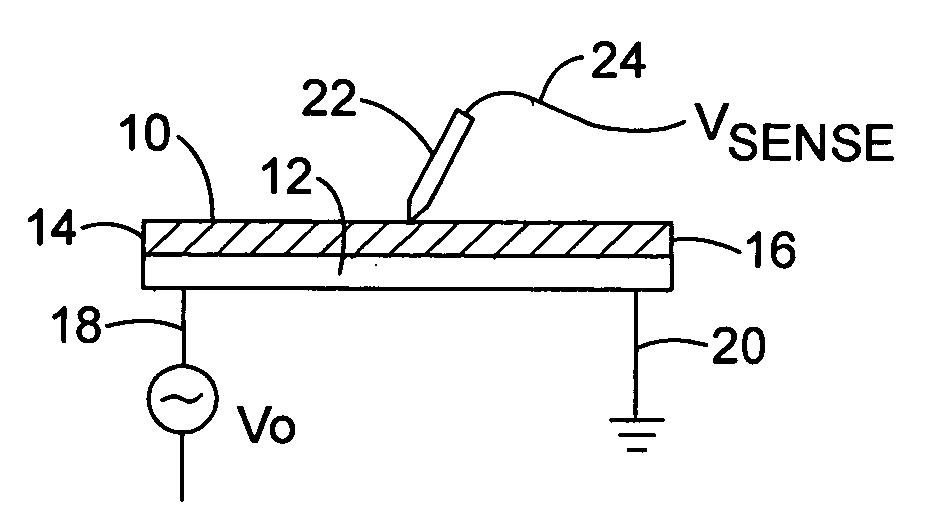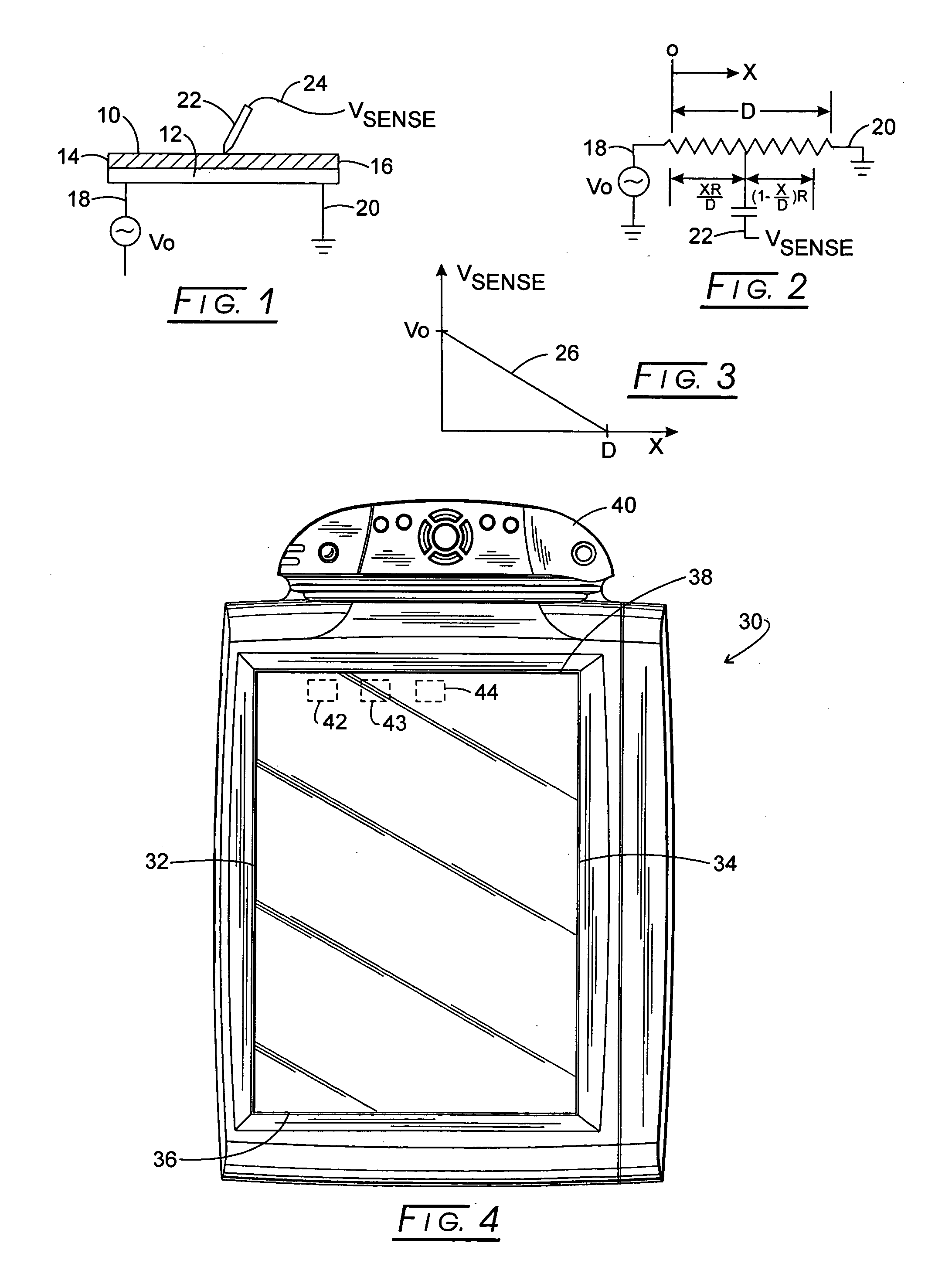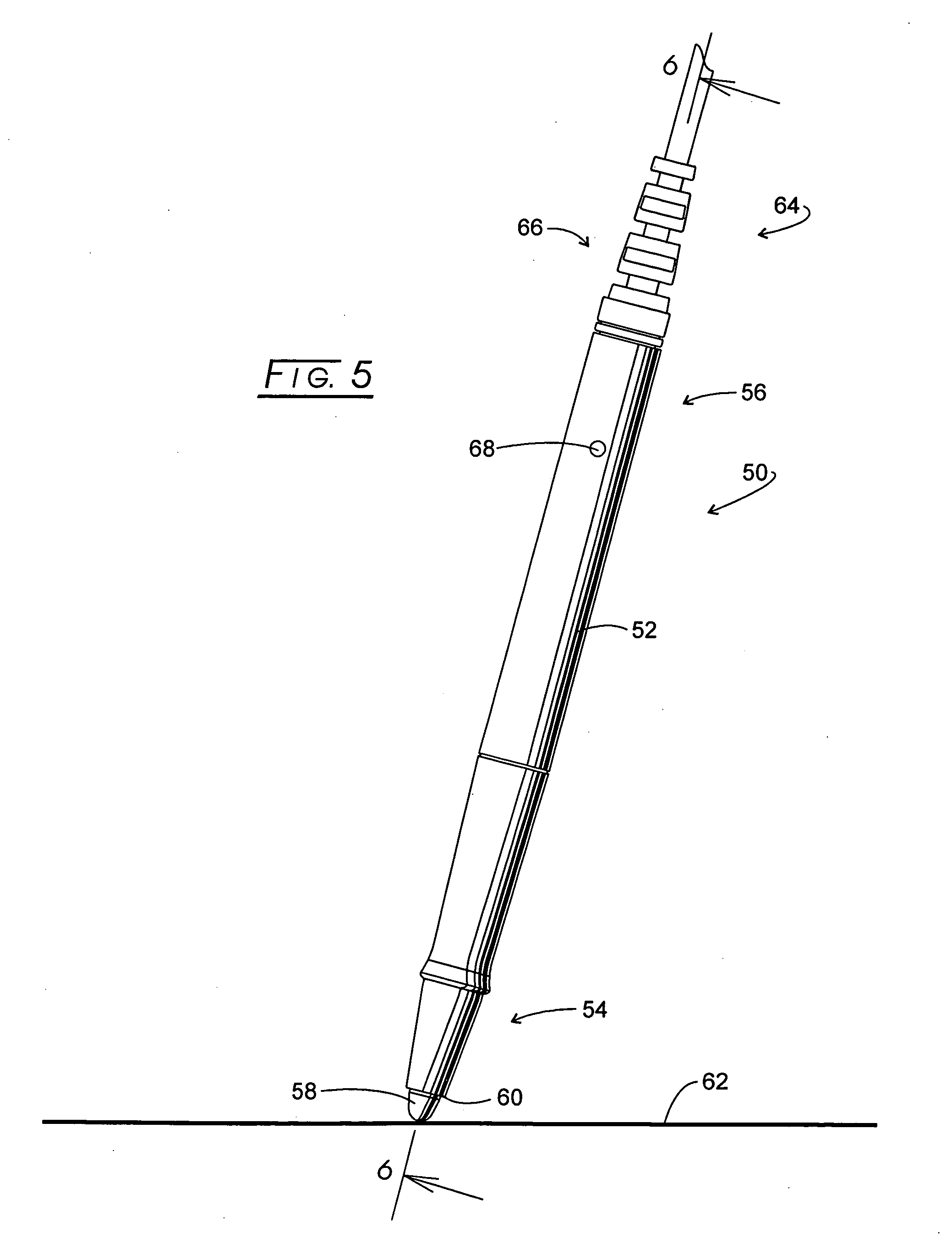Pen apparatus, system, and method of assembly
a pen and pen-type technology, applied in the field of pen-type apparatus, system and method of assembly, can solve the problems of non-uniformity of the coordinate readout received from the surface, subject to noise generation, aberration, etc., and achieve the effect of improving cost levels, facilitating production, and enhancing reliability of tip switching to provide pen-up and pen-down orientation data
- Summary
- Abstract
- Description
- Claims
- Application Information
AI Technical Summary
Benefits of technology
Problems solved by technology
Method used
Image
Examples
Embodiment Construction
[0064]As a preliminary consideration of the general approach taken with resistant surface electrographic technology, reference is made to FIGS. 1 and 2 wherein an idealized one-dimensional model is revealed. In FIG. 1, an insulative support 10 such as glass is shown overlaying and supporting a resistive layer of, for example, indium-tin oxide 12. Electrodes 14 and 16 are shown coupled to the resistive layer 12 at the opposite ends or borders thereof. Electrode 14 is coupled with an a.c. source designated V0 from line 18, while electrode 16 is coupled to ground through line 20. A pen 22 is positioned in contact with the glass support 10 which, through capacitive coupling serves to pick-up a voltage output at line 24, such voltage being labeled Vsense. The equivalent circuit for this idealized one-dimensional model is represented in FIG. 2 where the resistive layer 12 is shown as a resistor and the distance of the pen 22 from the edge of the resistor closest to the source V0 is repres...
PUM
 Login to View More
Login to View More Abstract
Description
Claims
Application Information
 Login to View More
Login to View More - R&D
- Intellectual Property
- Life Sciences
- Materials
- Tech Scout
- Unparalleled Data Quality
- Higher Quality Content
- 60% Fewer Hallucinations
Browse by: Latest US Patents, China's latest patents, Technical Efficacy Thesaurus, Application Domain, Technology Topic, Popular Technical Reports.
© 2025 PatSnap. All rights reserved.Legal|Privacy policy|Modern Slavery Act Transparency Statement|Sitemap|About US| Contact US: help@patsnap.com



